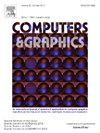FreqSpace-NeRF: A fourier-enhanced Neural Radiance Fields method via dual-domain contrastive learning for novel view synthesis
IF 2.5
4区 计算机科学
Q2 COMPUTER SCIENCE, SOFTWARE ENGINEERING
引用次数: 0
Abstract
Inspired by Neural Radiance Field’s (NeRF) groundbreaking success in novel view synthesis, current methods mostly employ variants of various deep neural network architectures, and use the combination of multi-scale feature maps with the target viewpoint to synthesize novel views. However, these methods only consider spatial domain features, inevitably leading to the loss of some details and edge information. To address these issues, this paper innovatively proposes the FreqSpace-NeRF (FS-NeRF), aiming to significantly enhance the rendering fidelity and generalization performance of NeRF in complex scenes by integrating the unique advantages of spectral domain and spatial domain deep neural networks, and combining contrastive learning driven data augmentation techniques. Specifically, the core contribution of this method lies in designing a dual-stream network architecture: on one hand, capturing global frequency features through Fourier transformation; on the other hand, finely refining local details using well-established spatial domain convolutional neural networks. Moreover, to ensure the model can more acutely distinguish subtle differences between different views, we propose two loss functions: Frequency-Space Contrastive Entropy Loss (FSCE Loss) and Adaptive Spectral Contrastive Loss (ASC Loss). This innovation aims to more effectively guide the data flow and focuses on minimizing the frequency discrepancies between different views. By comprehensively utilizing the fusion of spectral and spatial domain features along with contrastive learning, FS-NeRF achieves significant performance improvements in scene reconstruction tasks. Extensive qualitative and quantitative evaluations confirm that our method surpasses current state-of-the-art (SOTA) models in this field.

求助全文
约1分钟内获得全文
求助全文
来源期刊

Computers & Graphics-Uk
工程技术-计算机:软件工程
CiteScore
5.30
自引率
12.00%
发文量
173
审稿时长
38 days
期刊介绍:
Computers & Graphics is dedicated to disseminate information on research and applications of computer graphics (CG) techniques. The journal encourages articles on:
1. Research and applications of interactive computer graphics. We are particularly interested in novel interaction techniques and applications of CG to problem domains.
2. State-of-the-art papers on late-breaking, cutting-edge research on CG.
3. Information on innovative uses of graphics principles and technologies.
4. Tutorial papers on both teaching CG principles and innovative uses of CG in education.
 求助内容:
求助内容: 应助结果提醒方式:
应助结果提醒方式:


